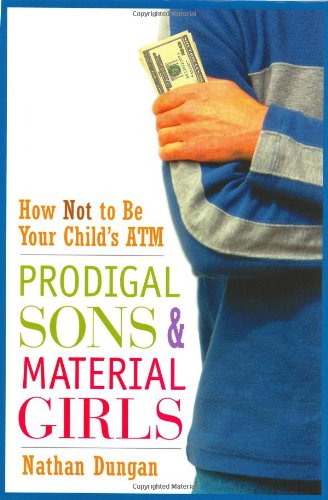
Prodigal Sons and Material Girls
How Not to Be Your Child's ATM
کتاب های مرتبط
- اطلاعات
- نقد و بررسی
- دیدگاه کاربران
نقد و بررسی

May 19, 2003
Financial advisor Dungan has written an informative guide to dealing with possession-crazed kids. Sure, young people are wooed by advertisers--those 18 and under spend $150 billion in the U.S. annually--but they can still be"savvy consumers who make decisions based on their values." Part one of Dungan's book paints a scary picture of the current state of affairs (e.g., the fastest-growing segment of those filing for bankruptcy are people under 25), while part two explains what to do about it, including having financial discussions with kids, learning to say"no" and teaching them how to save. Dungan's advice is sound, and he supports it with eyebrow-raising facts on everything from how kids value money (he cites a survey that found that 58% of young people aged 12 to 17"wouldn't bother to pick up off the sidewalk anything less than a dollar") to how they deal with financial woes (more than 63% of American college students"know someone who dropped out or reduced their class load so they could earn more money to resolve financial problems").

June 15, 2003
Financial advisor Dungan has written an informative guide to dealing with possession-crazed kids. Sure, young people are wooed by advertisers--those 18 and under spend $150 billion in the U.S. annually--but they can still be"savvy consumers who make decisions based on their values." Part one of Dungan's book paints a scary picture of the current state of affairs (e.g., the fastest-growing segment of those filing for bankruptcy are people under 25), while part two explains what to do about it, including having financial discussions with kids, learning to say"no" and teaching them how to save. Dungan's advice is sound, and he supports it with eyebrow-raising facts on everything from how kids value money (he cites a survey that found that 58% of young people aged 12 to 17"wouldn't bother to pick up off the sidewalk anything less than a dollar") to how they deal with financial woes (more than 63% of American college students"know someone who dropped out or reduced their class load so they could earn more money to resolve financial problems").
Copyright 2003 Library Journal, LLC Used with permission.

























دیدگاه کاربران